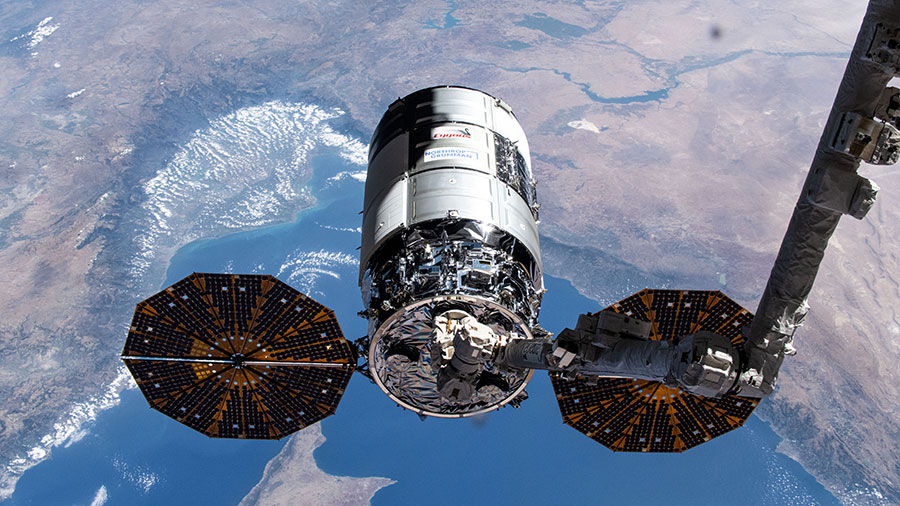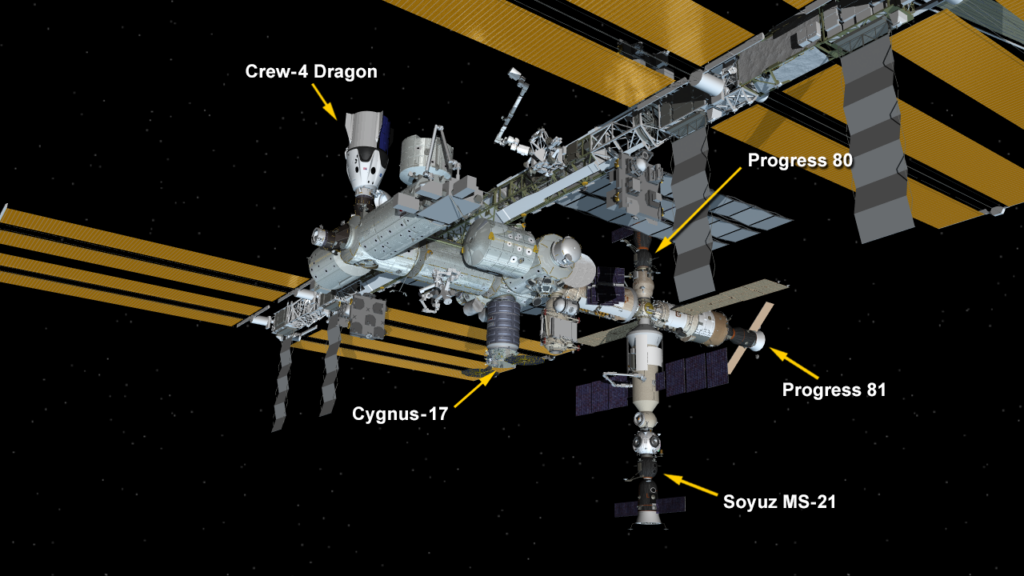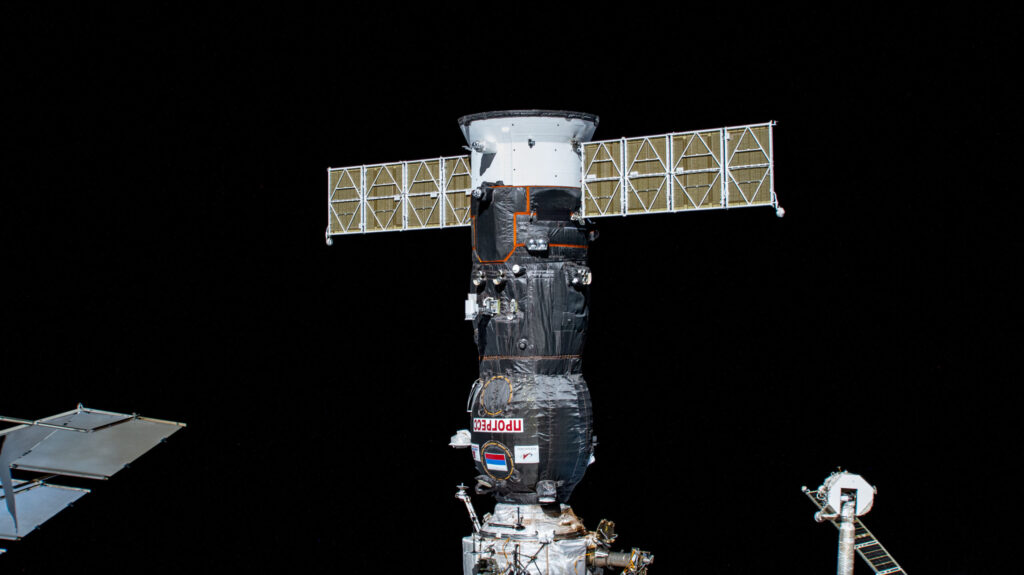
The residents aboard the International Space Station continued unpacking several tons of science and supplies packed inside Northrop Grumman’s Cygnus cargo craft on Wednesday. The seven-member Expedition 71 crew also studied an array of space research while the two Boeing Crew Flight Test astronauts from NASA reviewed their Starliner spacecraft’s systems.
NASA Flight Engineers Matthew Dominick, Mike Barratt, and Jeanette Epps spent the afternoon transferring cargo out of the newly arrived Cygnus space freighter. Starliner Pilot Suni Williams started the cargo work during the morning beginning the job of replenishing the orbital outpost with food, fuel, supplies, and new science experiments.
Earlier in the day, Dominick and Barratt conducted science operations to learn more about Earth’s climate and install a new research incubator. Dominick photographed the Moon from inside the cupola to measure sunshine reflected from the Earth. Results may provide scientists insights into climate change. Barratt installed and activated the Space Automated Lab Incubator (SALI) inside the Kibo laboratory module. The SALI can host a variety of samples at a range of temperatures supporting numerous space investigations into biology and physics.
Epps and NASA astronaut Tracy C. Dyson also spent their day on a variety of station science and maintenance duties. Epps transferred water between life support systems, configured a radiation detector, then wrapped up her shift with biomedical checks. Dyson worked inside the Destiny laboratory module throughout Wednesday configuring research hardware to study stem cells for treatment purposes and commercial use.
Williams joined Starliner Commander Butch Wilmore and reviewed on a pair of tablet computers the Boeing Starliner crew flight procedures and systems to maintain their operational proficiency. NASA managers also provided mission updates and answered reporter’s questions about Starliner and space station operations during a media teleconference on Wednesday.
Roscosmos cosmonauts Oleg Kononenko and Nikolai Chub tested the telerobotically operated rendezvous unit’s, or TORU, ability to communicate with the Progress 87 space freighter docked to the Zvezda service module’s rear port. The Progress 87 is due to depart the orbital outpost early next week making space for the arrival of the Progress 89 cargo craft with a fresh load of food, fuel, and supplies just over a week later. The TORU would be used to remotely control a Roscosmos spaceship in the unlikely event the spacecraft would be unable to complete its automated arrival or departure.
Roscosmos Flight Engineer Alexander Grebenkin spent a portion of his day on a host of orbital household duties including plumbing and camera battery charging. He later partnered with Kononenko and Chub and recorded a series of congratulatory and greeting videos for their home space agency.
Learn more about station activities by following the space station blog, @space_station and @ISS_Research on X, as well as the ISS Facebook and ISS Instagram accounts.
Get weekly video highlights at: https://roundupreads.jsc.nasa.gov/videoupdate/
Get the latest from NASA delivered every week. Subscribe here: www.nasa.gov/subscribe




